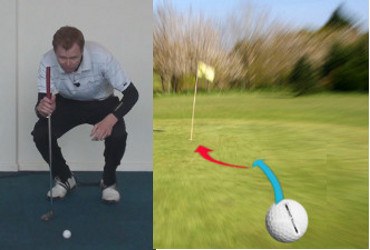
Understanding the Golf Term “Double Break”
When it comes to golf, there are various terms and jargon that players use to describe different aspects of the game. One of these terms is “Double Break,” which refers to the tricky movement of a putt on the green. Let's dive deeper into understanding this term and how it affects your game.
What is a Double Break?
A Double Break occurs when a putt breaks in two different directions. Unlike a standard putt that breaks either left or right, a Double Break combines two distinct breaks into a single putt. This happens due to the undulations and slopes on the green, which can make reading and executing these putts quite challenging.
Factors Affecting a Double Break
Several factors contribute to a putt's Double Break:
- Green Topography: The slope and undulations in the green's surface play a significant role in causing a putt to double break. These natural contours can result in the ball changing direction multiple times.
- Speed of the Green: The speed at which the green is running affects how much a putt might break. Faster greens often have more severe breaks, making double breaks more common.
- Grain of the Green: The grain of the grass on the green can influence the direction of the putt. A putt hit against the grain may break differently than one hit with the grain, amplifying the effect of a double break.
- Distance of the Putt: The length of the putt can also impact the likelihood of a double break. Longer putts tend to break more due to ball speed, while shorter putts may be affected more by the contours of the green.
Reading a Double Break Putt
Properly reading and visualizing a Double Break putt is crucial in executing a successful stroke. Here are some steps to help you read the double break:
- Begin by assessing the overall slope of the green surface.
- Identify the primary break direction based on the slope.
- Look for any secondary breaks caused by subtle contours or dips in the green.
- Consider the speed and grain of the green.
- Picture the putt's trajectory, accounting for the double break.
- Align your putterface and body accordingly.
Remember, practice is key to understanding and becoming comfortable with reading double break putts. Developing a feel for the green and gaining experience will improve your ability to read and execute these tricky shots.
Adjusting Your Stroke
When it comes to striking a Double Break putt, it's crucial to adjust your stroke to accommodate the changing break directions. Here are a few tips:
- Putterface Alignment: Align your putterface to accommodate the primary break and aim slightly to the opposite side of the secondary break.
- Stroke Path: Configure your stroke to match the double break by favoring the primary break initially and then adjusting your angle to follow the secondary break.
- Ball Speed: Consistency in ball speed is essential to successfully navigate a double break. Too much or too little speed can throw off the putt.
By making these adjustments and practicing regularly, you can become more proficient at handling double break putts, ultimately improving your putting performance on the course.
Remember, mastering the double break is an ongoing process. With dedication, practice, and a solid understanding of the factors influencing double break putts, you'll enhance your overall golfing skills and fine-tune your putting technique.





